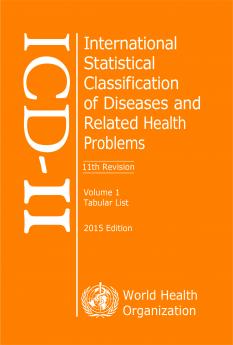Related Topics
No topics are associated with this blog
Hospital Inpatient Charges, as Seen by Medicare

|
| IDC-11 Code Book |
On May 8, 2013, the Department of Human Services Press Office released a news bulletin, containing four references to its own web sites, and a page of commentary. The main departmental reaction seemed to be that hospitals submit widely differing charges for the same Diagnosis Related Group. That was not entirely surprising, since the 10,000 diagnoses listed in the International Classification of Diseases are lumped together into roughly 300 Diagnosis-Related Groups.
Examples cited included a joint replacement admission in Ada, OK charged $5300, compared with another in Monterrey Park, CA, charged $223,000. Another cited example included heart failure treatment in Denver CO, ranging from $21,000 to $46,000. Articles referenced in the Press release indicated (in round numbers) the material was drawn from 7 million discharges in 2011, representing 60% of discharges, totaling many billions in claims charges. Because only the 100 most common diagnosis-related groups were examined, it is not possible to be confident about average posted charges, which at a rough guess averaged around $35,000 per admission.
Using that approximation, the aggregate claims charges reached a minimum total of $245 billion, and might well have reached as much as $400 billion, using the roughest of extrapolations for a 100% sample. By any kind of minimum approximation, these numbers employed as a cross-check seem unduly large, since they would then be half the total annual hospital expenditures for 2011. Whether the national statistics here cited as a reference point represent claims prices or actual audited costs, is not stated in the NHE report.
Data for each diagnostic group in this particular report is provided in two forms: total claims submitted, and total payments made. The statisticians were expansive in their definition of payments, including in that figure the DRG payment, deductibles and copayments, and special allowances for blood transfusions and "disproportionate share" of indigent care. Since it is commonly stated during the Obamacare debate that Medicare pays full costs plus a small profit margin, these numbers come reasonably close to what might be described as a fair market price. The total claims figure, by contrast, is almost uniformly about 400% of the fair market price, regardless of the locality of the hospital or the diagnosis. Since the claim cost is so unrealistically distant from the actual cost, it misleads a great many people, particularly physicians making an effort to devise cost-efficient care strategies.
It seems to be the high time someone called in a hospital cost accountant -- apparently, any one of them would suffice -- and ask the simple question. Why do you do this?
Originally published: Friday, August 16, 2013; most-recently modified: Tuesday, May 21, 2019